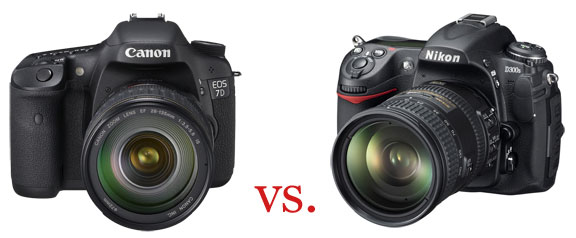A few weeks ago, I compared the Canon 7D to the Canon 5D Mark II, suggesting that they’re both excellent cameras, but suited to different types of work. However, there is another camera that appears to be intended for the same target market as the Canon 7D, with many similar functions and a very similar price (within $100). That camera is the Nikon D300s, which was released a few months before the 7D. Again, I can say that they’re both excellent cameras, and the deciding factor for purchasing one will undoubtedly be which of the features are most important to your photographic style.
But the cameras are not created equal. Let me begin with a side by side comparison of their most prominent features.
| Canon 7D | Nikon D300s | |
|---|---|---|
| Price (Amazon / J&R) | $1699 / $1699 | $1799 / |
| Sensor | 18 Megapixel CMOS (APS-C) | 12.3 Megapixel |
| Crop Factor | 1.6x | 1.5x |
| ISO Range | 100-6400 (+12,800) | 200-3200 (+100, 6400) |
| Max. Continuous Shooting Speed | 8 frames per second | 7 frames per second (boostable to 8fps with optional battery pack) |
| RAW Shooting Speed | 8 frames per second | 2.5 frames per second in 14-bit, 7 in 12-bit |
| Shutter Lag | 64 milliseconds (pre-production test) | 49 milliseconds |
| AF System | 19-point dual diagonal cross-type | 15 cross type sensors, 51 focus points. |
| AF Range | EV -0.5 – +18 | EV -1 – +19 |
| RAW type | 14-bit Canon proprietary | 12/14 bit Nikon proprietary |
| Card Slots | 1 CF | 2 (1 CF, 1 SD) |
| View Finder Coverage | 100% | 100% |
| Shutter Speeds | 1/8000 – 30 sec. +bulb | 1/8000 – 30 sec. +bulb |
| X-sync | 1/250 sec. | 1/250 sec. |
| LCD Size | 3 inch, 920,000 pixels | 3 inch, 921,000 |
| HD Video Resolutions | 1080p, 720p | 720p |
| Video Frame Rates | 24/30 at 1080, 24/30/50/60 at 720 | 24 fps |
From this quick comparison, it should be clear that the cameras have a lot in common. The Canon 7D, however, seems to excel with its video functionality and it’s RAW shooting capabilities. As a RAW shooter, I must admit that I’ve have been very disappointed to find that I’d purchased a camera that claims 7 frames per second and can only manage 2.5. On the other hand, the D300s does have remarkably fast auto-focus, and slightly less shutter lag than the Canon. If I were buying a camera based on its ability to shoot video, the added resolution of 1080p (as well as the ability to shoot slow-motion video at 60fps) would be persuasive, although I don’t have any particular interest in video.
Sensor and Digital Noise
Obviously, the Canon 7D has a substantially higher resolution sensor. With a fine lens (coupled with excellent technique), I have no doubt that the Canon’s sensor will produce images superior to the D300s in good lighting situations. Many of us, unfortunately, spend most of our working day in poor lighting situations. The D300s, like it’s predecessor the D300, has excellent low light sensor performance.

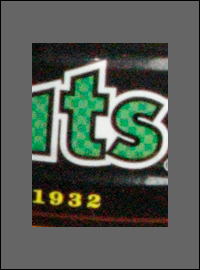
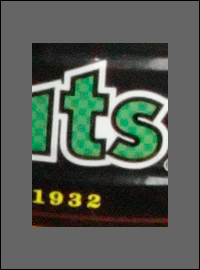
Let’s do a thought experiment. Suppose that the digital noise is significantly better on the D300s than the 7D (though I haven’t seen conclusive tests at this point). We know that digital noise is a pixel-level problem, and that the 7D’s pixels are much smaller than those of the Nikon. If you were to take a noisy 18 megapixel image and down-sample it to 12.3, would any of that digital noise survive? What if you ran noise reduction on the Canon image before down-sampling? The downsampling would reduce the effect of the softening that is normally introduced by noise reduction. We are talking about a 32% reduction in size, which is significant.
The photos at left were taken with the 7D (pre-production) at ISO 6400, which is available as an extended ISO mode on the D300s, but is the highest normal shooting ISO on the 7D. Considering the grain that I used to get with Tmax 3200, even the noise of the non-reduced image is impressively well controlled, and once it is reduced, it’s not much of a problem in this case (although this example is less noisy than other parts of the image).
As you can see in the noise reduced example, because the noise reduction was applied before re-sampling, the sharpness of the final the two down-sized examples is very similar if not identical. This is the benefit of starting out with a much higher resolution image when post processing is going to be a significant factor. As far as I’m concerned, this final image is what the Nikon D300s has to compete with straight out of the camera (at its highest possible ISO setting). Unfortunately, I only have an older D300 available for testing at the moment, but since the sensor is the same, I may decide to post comparative photos later.
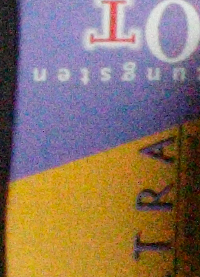
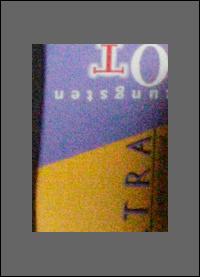
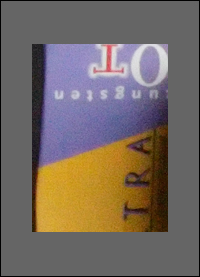
Lets take a final look at another region of the same photo in which the noise was a little more prominent to begin with.
After simple down-sampling, the noise in this part of the image was heavy enough to remain somewhat prominent. With the addition of noise reduction beforehand, however, the sharpness of the image remains roughly the same and the noise is becomes a minor problem, in comparison, though it is certainly not gone.
I’ve presented the preceding information based on the assumption that the Nikon D300s is equal to or moderately superior to the Canon 7D when it comes to digital noise to begin with. At this point, however, testing seems to show just the opposite to be true. Nikon D300s shots at ISO3200 and 6400 from at least one test are hardly recognizable, much less usable. Click here for further details (opens in new window).
Testing of both cameras will continue, and problems with each will become more apparent. At the moment, though, I’m inclined to believe that the Canon holds the advantage in this competition.

